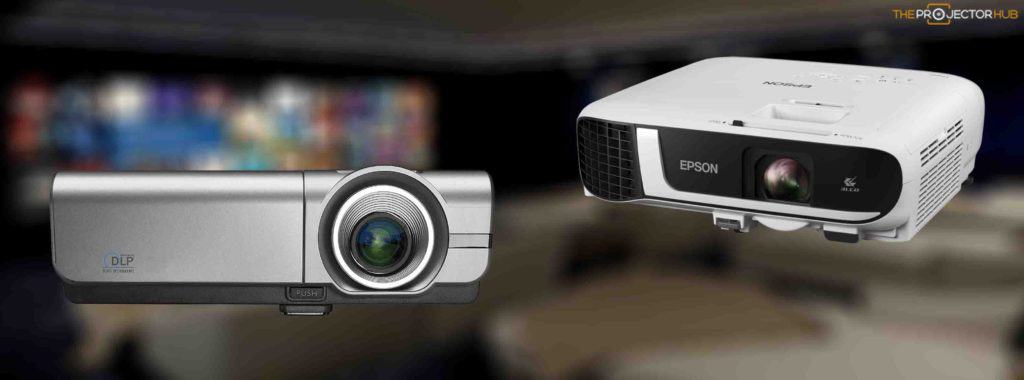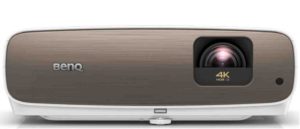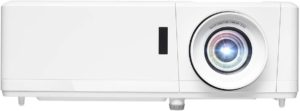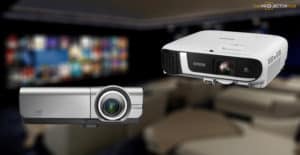 People are enthralled by the best-performing products when it comes to purchases. And today, you’re looking for the most efficient, Best projector under 2000 dollars. But at the end of the day, you might have realized that low-budget projectors can provide quality and performance.
People are enthralled by the best-performing products when it comes to purchases. And today, you’re looking for the most efficient, Best projector under 2000 dollars. But at the end of the day, you might have realized that low-budget projectors can provide quality and performance.
In this article, we will talk about Projectors under 2000. And within that budget, you can get a great projector.
And, nothing is bad with these projectors. Some projectors can also provide excellent features at this price, while others are average in quality and durability. You may wonder why there’s an average projector at $2000 even though the price is pretty high.
Let me inform you that there are numerous brands in the market. There’s lots of competition for every brand, constantly introducing new features and using modern technologies. But that doesn’t mean you won’t get the best projector for $2000.
5 Best Projector Under 2000: Reviews & Buying Guide
1: Epson 3800 – 4k projector
For starters we have the Epson 3,800. This projector is 4K and offers advanced pixel-shifting (4K Pro ultra HD) tech that helps deliver the 4K experience. It has a brightness rating of 3000 Lumens and has a contrast ratio of 100,000 to 1 (the brightness rating allows it to work well in rooms with moderate amounts of ambient light). The 3800 has support for HDR10 and HLG high dynamic range. And (a difference that is seen between this projector and its predecessors) the projector comes with compliance for 18gbps HDMI 2.0.
The Epson 3800 also comes with a low 20ms input lag that allows for gaming in 4K, which makes it perfect for those who want to game on a large screen. What it lacks in black levels or contrast it makes up for in vibrancy. Another change that can be seen between this projector and those that came before it is that it’s lighter and more compact. It also uses the 16 step HDR brightness control that that projectors before it utilized.
2: Optoma UHD38
The Optoma UHD38 is a true gaming projector with an input lag that is lightning fast and a high refresh rate (lag as low as 4.2ms and refresh rate as low as 240hz). The UHD38 has a brightness rating of 4,000 lumens, allowing it to be used in places from a darkened theater to rooms with moderate to high ambient light. Aside from that, this projector comes with built-in speakers, taking away the need to hook up external ones.
The UHD38 has a compact design, but is slightly taller and heavier than most other casual projectors. This projector comes with an enhanced gaming setting that drops the lag to 16.7ms, which is very low for projectors. Now, the UHD38 has 32:9 aspect ratio support as well. The HDMI ports on it only support 4K games up to 60 Hz. It also claims to have a contrast ratio of 1,000,000 to 1 with the “Dynamic Black” feature included.
3: BenQ HT3550 – 4K home theater projector
 Let’s return to home theater projectors—another 4K machine from the BenQ store. BenQ has labeled this projector as a short-throw, but this is not a true short-throw. You need to set this up for at least 8 feet to achieve a 100-foot image on the wall.
Let’s return to home theater projectors—another 4K machine from the BenQ store. BenQ has labeled this projector as a short-throw, but this is not a true short-throw. You need to set this up for at least 8 feet to achieve a 100-foot image on the wall.
Technical Specifications:
Though it is a 4K projector for home theater, sometimes the quality does not depend on the number of pixels in a resolution. You are likely to miss quality if you have a low contrast ratio against 4K.
Due to its Dynamic IRIS, this projector has a higher native contrast ratio. It is an automatic mechanism in most high-end (including this one) projectors, which adjusts the brightness itself.
Its projection is one of the best, even in some light rooms, as its iris makes some specific scenes even bright, which leads to overall enhancement. You might notice a difference in quality for HDR modem that could be even better.
Still, it gives some higher resolution that prevents eye stress as well. If you get it installed in a dark room, you will fall in love with it. In 4K mode, you will get a higher resolution. But the cinematic touch may seem to be underrated in some scenes.
Display & Performance:
One thing you need to be clear at; the sensor itself is not a 4k, as this would increase the cost ultimately. Instead, the projection box uses pixel shift technology. Even with this mechanism, you will get a clean & high contrast color, which gradually reproduces a high-quality projection.
Though the colors come slightly calibrated, which may seem unrealistic to you if you are new to these things, this calibration will look more improved for those who want to upgrade your projectors.
This has a smooth motion effect, which is handy if you are planning to watch sports on it. It will smooth those scenes even if this is not a 60 FPS. This effect will not work effectively for watching Netflix or other movies.
Ending the section, you might hear the motor sound for Pixel Shifting if you start pushing it hard. So, it would be best if you used it correctly.
4: Epson 4010
One of the latest in Epson line of 4K-ready projectors is the Epson 4010. The 4010 relies on the pixel-shifting technology that is native to 1080p LCD imagers to provide a “4K enhanced” resolution. This projector has allowed Epson to close the gap between other manufacturer’s 4K-resolution projectors and their pixel-shifted ones. It’s considered a significant model because of its use of 4K Pro-Ultra HD a group of advancements that use an algorithm that delivers on-screen results that occasionally exceed that delivered by projectors with 4K ratings.
The 4010 has a brightness of rating g 2,400 lumens and a contrast rating 200,000 to 1. The tone mapping algorithm for this projector has had a bit of work done on it allowing it to deliver improved rendering of HDR content . Aside from those things mentioned it also has a dynamic iris to improve contrast and deepen the blacks on dark scenes, a Digital Cinema Mode that delivers all of the expanded DCI color space, support for 1080p 3D Blu-Rays , a 2.1x zoom with motorized focus, and lens shift, and 10 lens memory positions.
5: Optoma HZ39HDR – Laser Projector
 Before diving directly into it, we want to say that; Optoma has dominated this list at least five times. This makes you confident that whatever they have made does its job perfectly.
Before diving directly into it, we want to say that; Optoma has dominated this list at least five times. This makes you confident that whatever they have made does its job perfectly.
Technical Specifications:
This projector with High-Definition Resolution is exclusively meant for home theaters. But you will still find 04 different variants of it, representing Optoma’s diversification in this category.
For every single variant, there there’s at least one change. Two of these four variants use a 4000 Lumens brightness, while the rest use 3200 to 3500 Lumens.
For 4000 lumens variants, you can either have a Lamp free feature or a 1.3x Zoom feature. Both of these variants have different price points, which significantly impacts their performance.
Display & Performance:
The Lamp can last up to 30,000 working hours and features DuraCore laser light technology to reduce eye pain. You can enjoy a bright yet enhanced streaming experience with these lamps.
With this immense brightness, you can install this projector in the Living room, theater, or any other room. It depends on your choice. Its sluggish yet modern design makes it more used for modern interiors.
This is an easy-to-install setup that you can adjust on your ceiling by adjusting the keystone correction for up to 30° offset. However, it is not a short-throw projector & this is why it projects an image of 100 inches from 10 feet.
The good thing is that it reproduces a decent quality without compressing or manipulating its brightness, sharpness, or any contract. Plus, this is some low-noise projector on the list, which does not make loud noises.
After reading reviews of products, you should know some things people often ask about, and you may have these questions in mind.
How long do projectors last?
The life expectancy for projectors is approximately 1500-2000 hours of lamp life. But some projectors with more modern technology claim to last 5000 hours. And we tell you there are projectors in the market that can reach up to 20,000 hours.
How much does it cost to replace a projector bulb?
Some lamps are less than $300. And most lamps are in the $400 to $500 range and will remain so for the foreseeable future.
How do I find out the lifespan of my projector?
Connect your projector to an outlet and then turn the projector on. It will take some time to get warm.
Click on “Menu” on your projector to activate the menu that appears on the screen. Choose “Setup” or “Options” under the menu.
Then choose “Lamp Time” or “Lamp Hour” to see a summary of the remaining hours on your light bulb.
Can the projector replace the TV?
Yes, you can use a projector for regular TV watching. It won’t hurt your projector. But though it could bring the life of the bulb quicker.
Conclusion Paragraph | Best projector under 2000
If you want to save some bucks, you have to compromise a little bit on your expectations & its performance. And, if you don’t want to compromise on such expectations or the performance, many options are still left.
But yes, you might have to lose your bank a little bit to get exactly (or even more) what you want to see in your life. With so many options for projectors under $2000, it becomes hard to figure out the best match for your home theater.
We always understand the intent behind your need, which makes us put our best while selecting the best possible choices for you. Here, we have figured out the best projector under 2000 dollars that perform like a charm.
